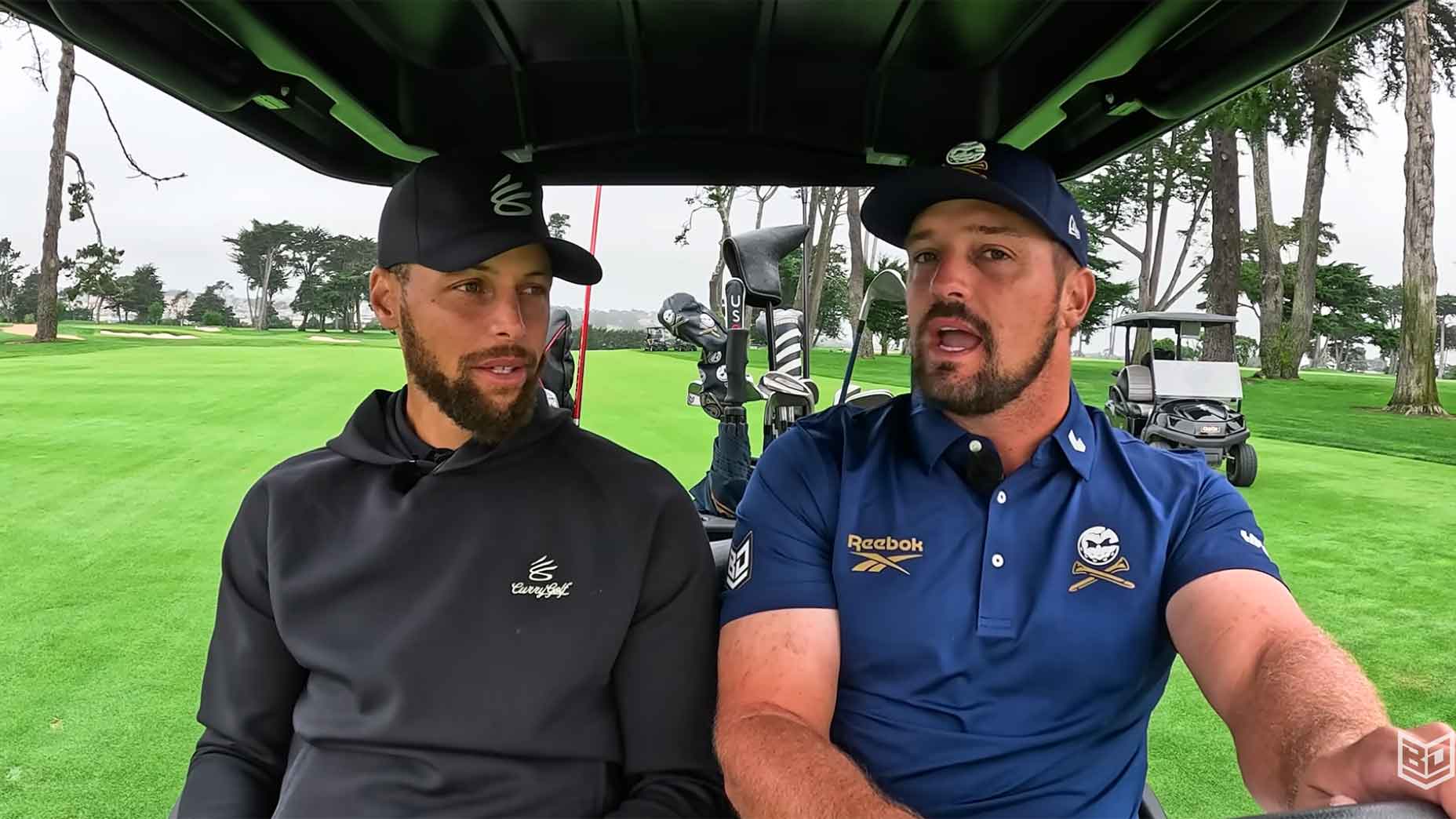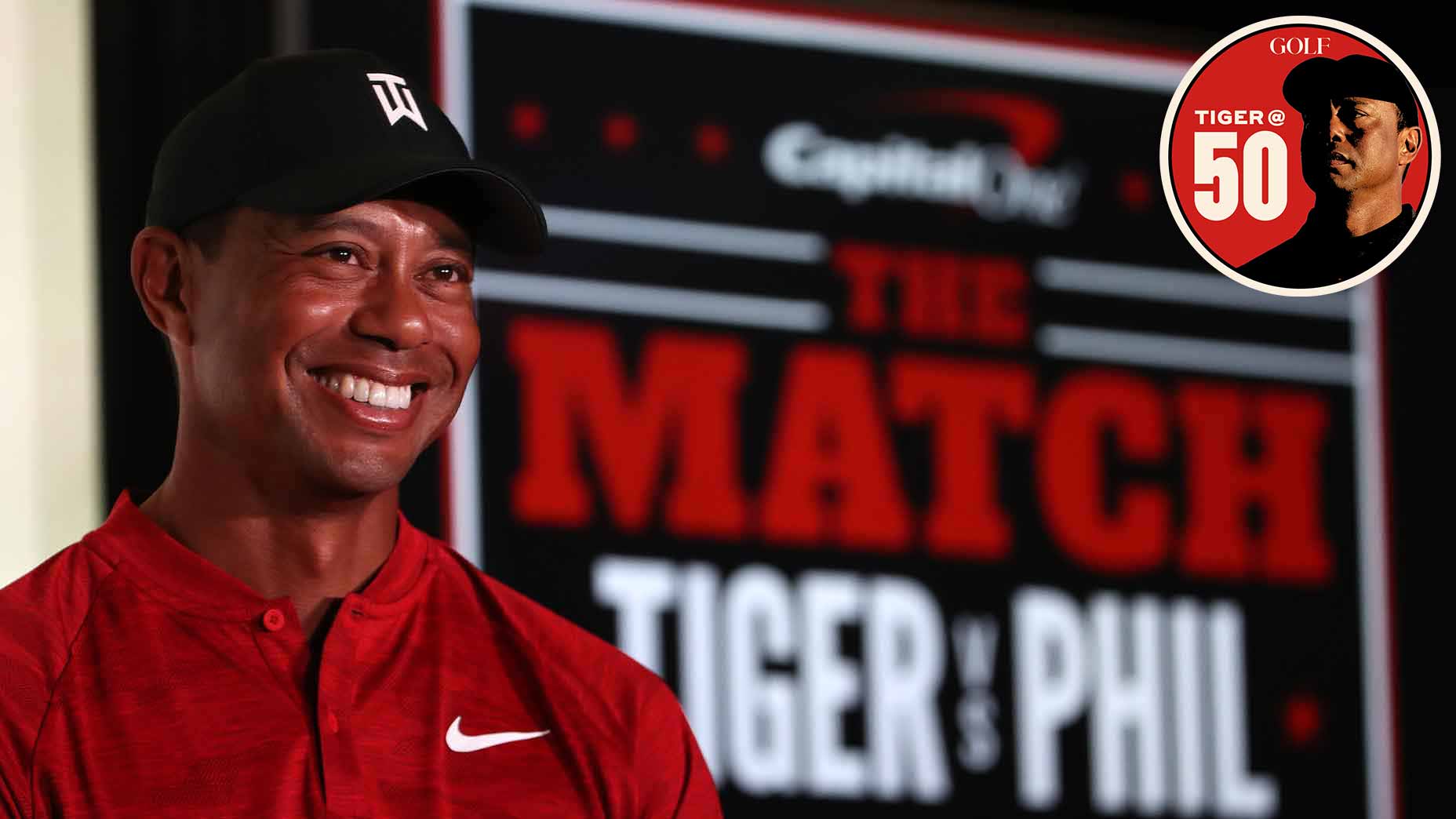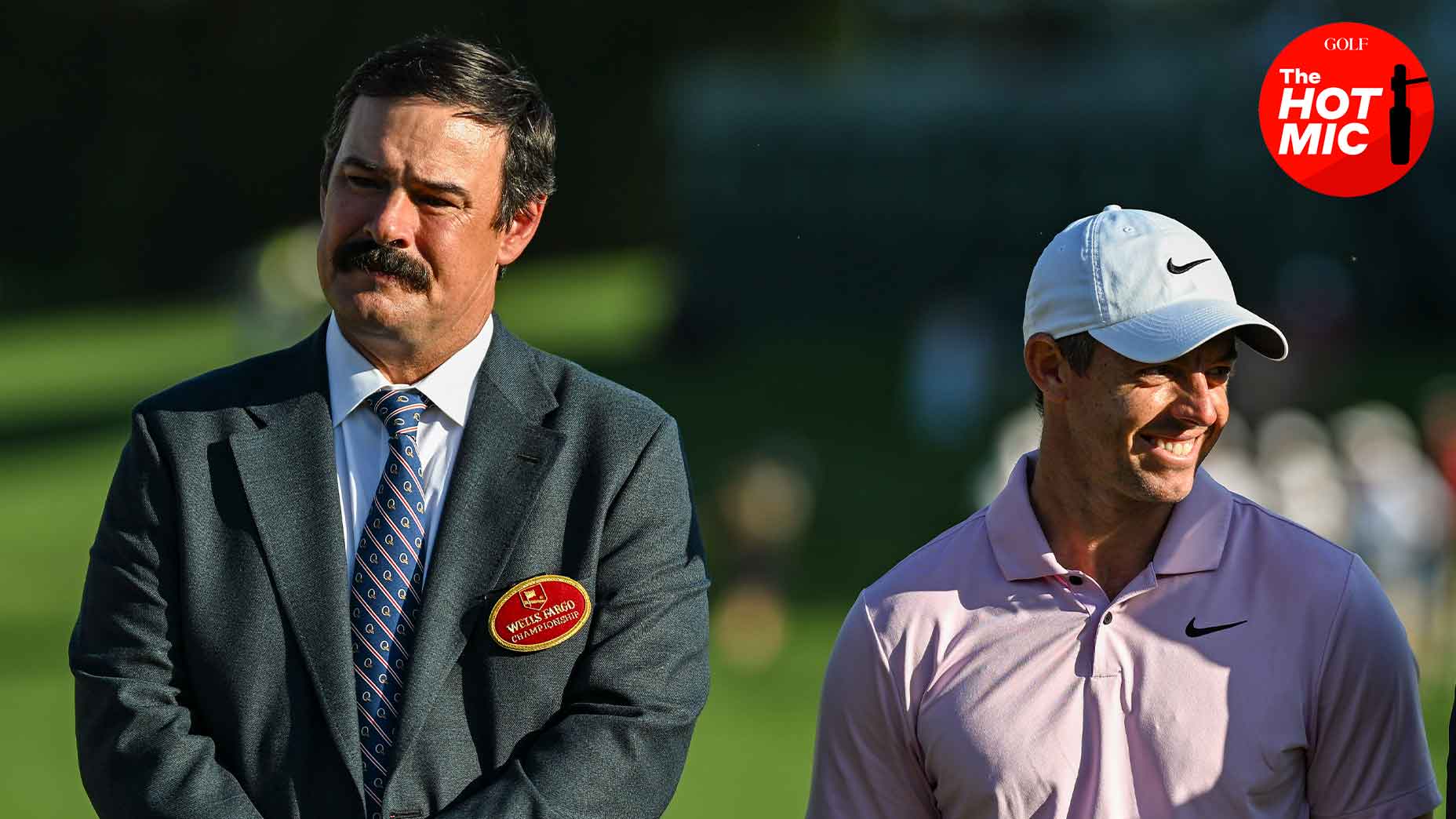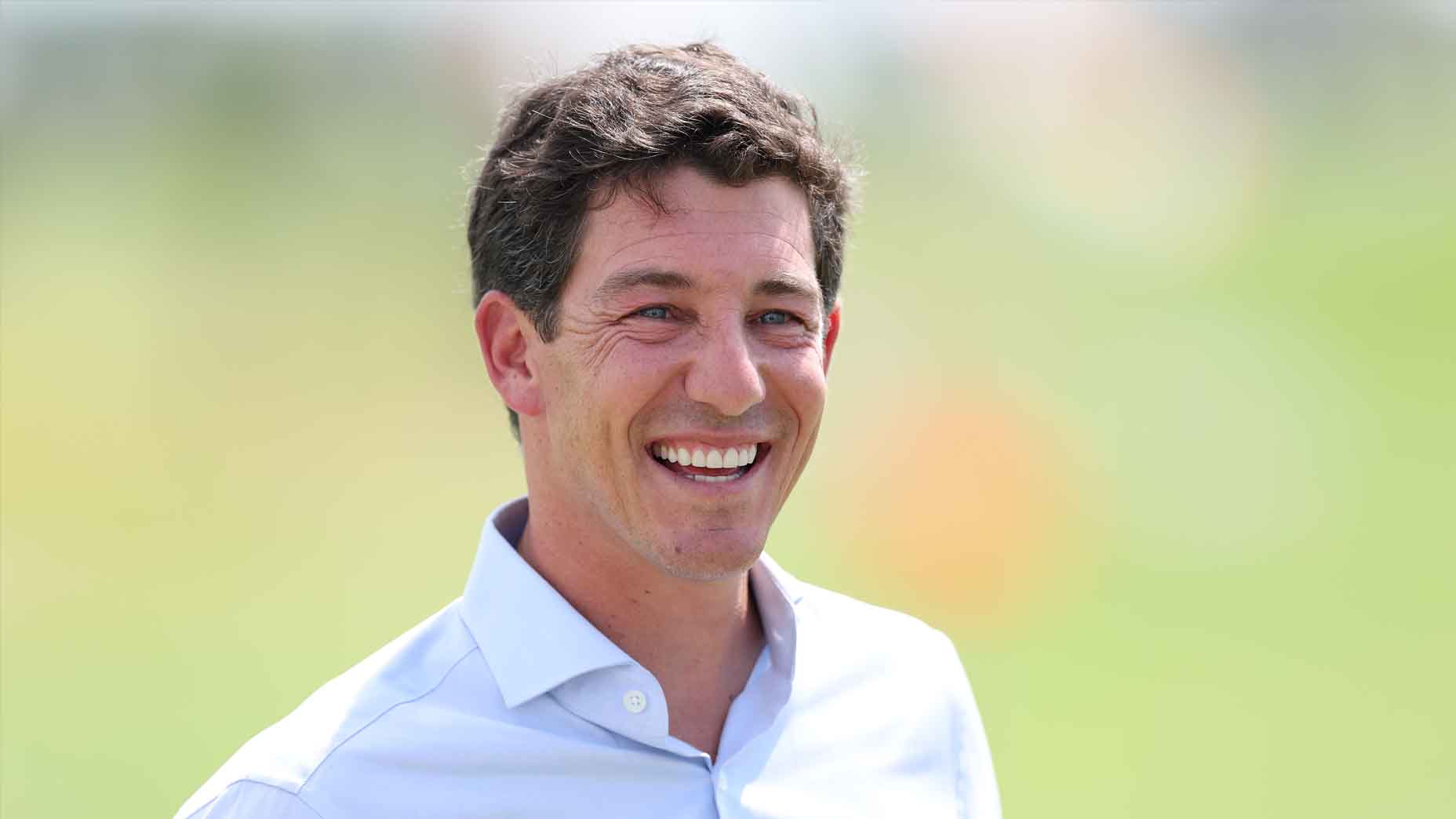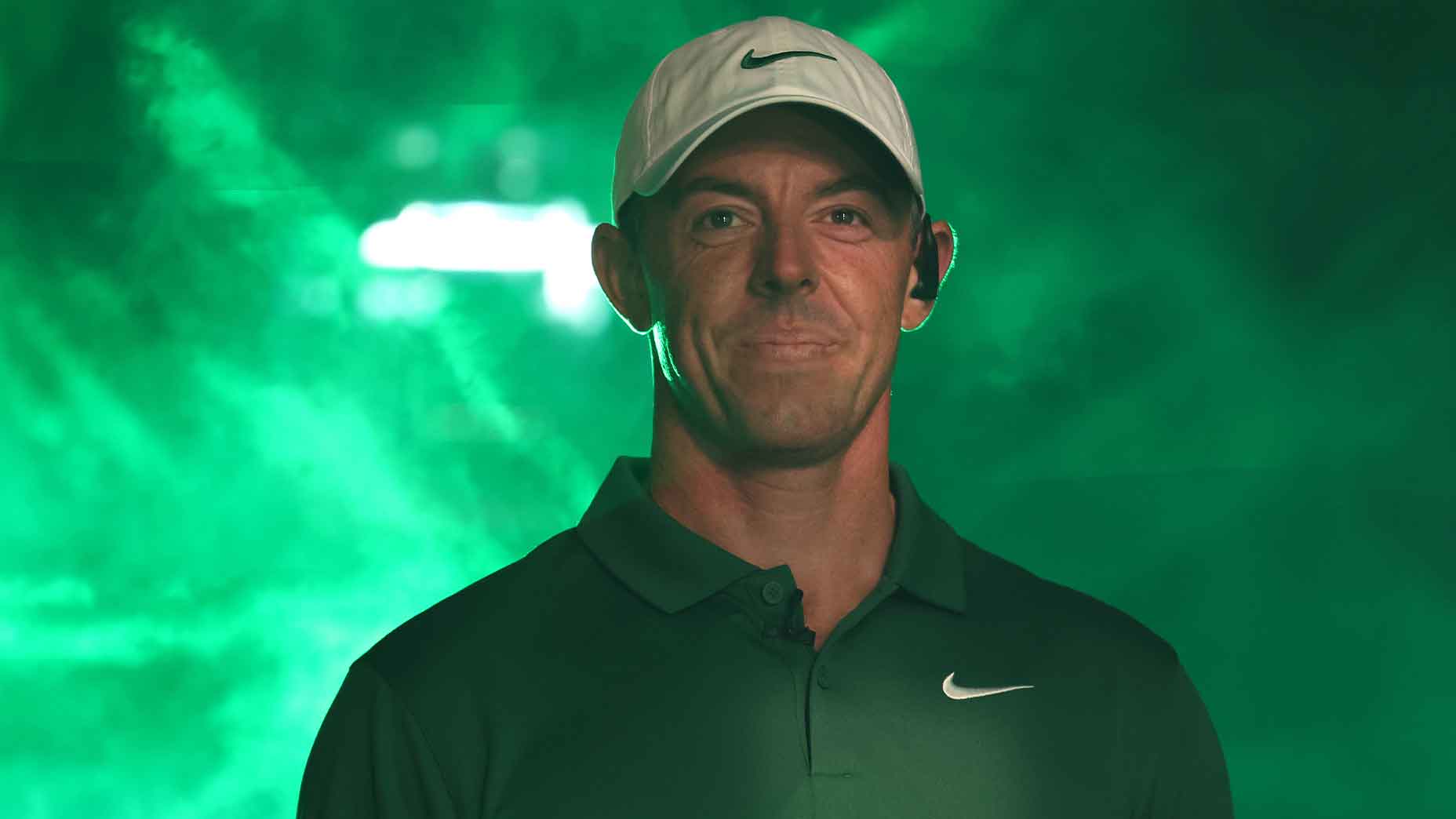Jay Monahan is by most accounts a decent guy. But even decent guys sometimes have to trade in deception.
Like, for example, during the second act of your twice-a-year media availability assessing the state of your employer’s business, when a reporter has just asked you a particularly thorny question. Ethics and morality say you should try to answer the question honestly, but about a zillion years of public relations research shows it’s best not to answer at all.
So, you make up an answer that sounds a little bit like what Jay Monahan said on Wednesday morning at the Tour Championship, when the PGA Tour commissioner was asked about his feelings on the Tour’s freefalling TV ratings. Not an outright lie, but a deft bit of spin.
“I think when you look at 2024, it’s important to note, and I’m going to note it, that overall consumption across our platforms in aggregate is up,” Monahan said, straight-faced. “That’s a really good sign for the PGA Tour and the engagement that we have with our fans.”
If you understand the nature of TV ratings conversations, you can only appreciate the shiftyness of this answer. To Monahan’s point, perhaps the “overall consumption” really is up “in aggregate.” That sounds like great news. But the even better news is that few people know what the PGA Tour’s overall consumption even is, and nobody knows how those metrics correlate to dollars earned by the Tour. In other words, it’s a way to claim a victory in the face of relatively damning evidence to the contrary.
We care about TV ratings because they help us understand why networks pay such exorbitant sums to broadcast sports. Big audiences mean more ad money, which is the start of the unholy cycle of the TV business (more ad dollars equals more value, and more value equals more money passed along to leagues in exchange for their rights). Declining audiences, on the other hand, mean trouble.
And rest assured, trouble is approaching the PGA Tour in the world of TV ratings. In his question to Monahan, Josh Carpenter of the SBJ suggested one of the Tour’s TV partners had seen ratings drop by “15 to 17 percent” from 2023. After years of stable or mildly declining ratings, 2024 marked an unpleasant experience with audience freefall that the Tour would very much like to avoid repeating.

Does all that mean Monahan was lying when he suggested the PGA Tour’s overall consumption was up? Not exactly. It means he was deliberately not addressing the truth, which is that the PGA Tour’s TV partners have seen close to one-fifth of their audience disappear in 2024. And, when the TV partners see one-fifth of their audience disappear, it doesn’t matter if the PGA Tour’s consumption data uncovers the Zodiac. It’s bad news for the Tour, for golf, for the networks — for everyone.
Now some important qualifiers. Yes, TV audiences are slowly falling across the board because of the decline of cable television. Yes, audience metrics are changing each year to more accurately capture those who have left cable TV but still watch live television. And yes, the PGA Tour had seen a few years of steady ratings through the first few years of LIV, which means we cannot immediately assume the dip in audience is tied to Saudi divisiveness and not at least partially because of, say, a host of other issues like scheduling and bad weather and weird audience behaviors and cable TV’s slow death march.
Monahan made a few of these points on Wednesday, also announcing the creation of a fan feedback program that aims to test and implement fan-promoted broadcast solutions in PGA Tour telecasts. (No word from the Tour on if they will consider “less commercials” sufficient feedback.)
“Nielsen itself is currently looking at its own system and will be announcing changes to its system,” Monahan said, before pivoting to another preferred buzzword. “When you look at reach at the PGA Tour, when that comes out, you’re likely to see a double-digit increase in reach from the PGA Tour, as they’ve been able to further dig into the intelligence that they are now capable of receiving through other partners.”
These are all good points, all fair defenses of a business that probably isn’t as bad as the sky-is-falling TV ratings coverage (of which this column already does far too much) suggests. But do we actually believe Jay Monahan when he says he isn’t too worried about TV ratings?
Strangely, and only for the moment, yes.
Monahan is obviously conflating the truth in the hopes he can divert attention away from the really bad numbers and into some of the less-bad ones. He obviously understands that Nielsen is not to blame for his golf tour’s ratings falling in 2024, because if Nielsen were to blame, every other show on television would have fallen by similar margins. He does not seriously believe consumption and reach are more valuable quantifiers than TV audience.
But he does understand the most important piece of the TV ratings gambit, which is that nothing matters in the middle of a contract. The PGA Tour is bound to NBC and CBS through the end of the decade by two separate, very large quantities of paper: a few billion dollars and many hundreds of pages of legalese. That much is not changing. And, until it comes time to start negotiating rights again likely sometime in ’28 or ’29, it will not change.
For Monahan to undermine the Tour’s position by calling out its year of dreadful TV ratings is an own goal not worth taking. The paycheck is the same no matter what he says. The same is true for the network’s TV partners, which is why we’ve heard nothing but words of support, and to some extent dismissal, about low-ratings grumbles.
For the golf public to obsess over those same TV ratings is an own goal of similar, if slightly more understandable, proportions. The numbers feel like they matter, especially now. For better or worse, the only quantifiable battlefields in the war between the PGA Tour and LIV exist at the major championships and in the Nielsen guide. If the numbers are down, they must mean something, especially when those numbers confirm our preexisting feelings of existential dread.
The truth is that the numbers do mean something, just likely a little bit less than you’ve allowed yourself to believe. The PGA Tour will probably not get dumped by its TV partners or sold off for scraps before the end of its contract, which means the Tour has a few years, if not more, before the public concerns of today become ample cause for boardroom freakouts.
The news is not good. Falling 15 percent in a year is like losing 15 games in the first half of an NBA season. We’re closing in on the All-Star break but it’s not too late to turn things around.
Be concerned, be very concerned if you’d like. Just don’t be surprised when Jay Monahan tells you he isn’t.
You can reach the author at james.colgan@golf.com



